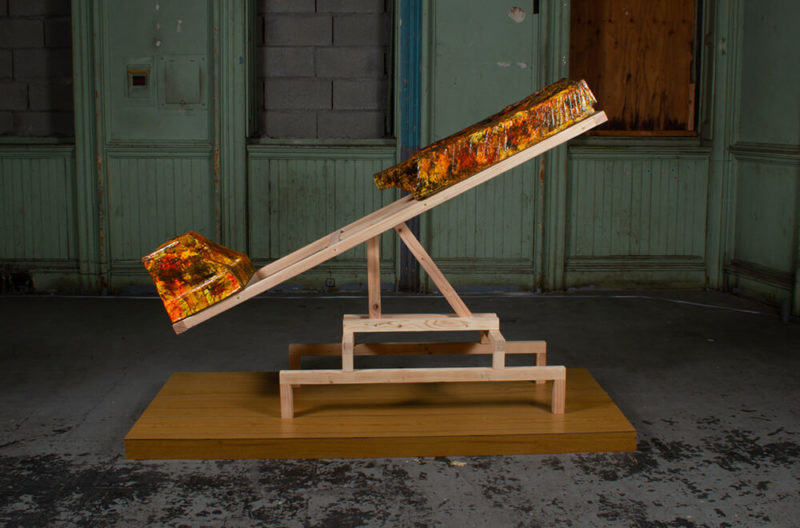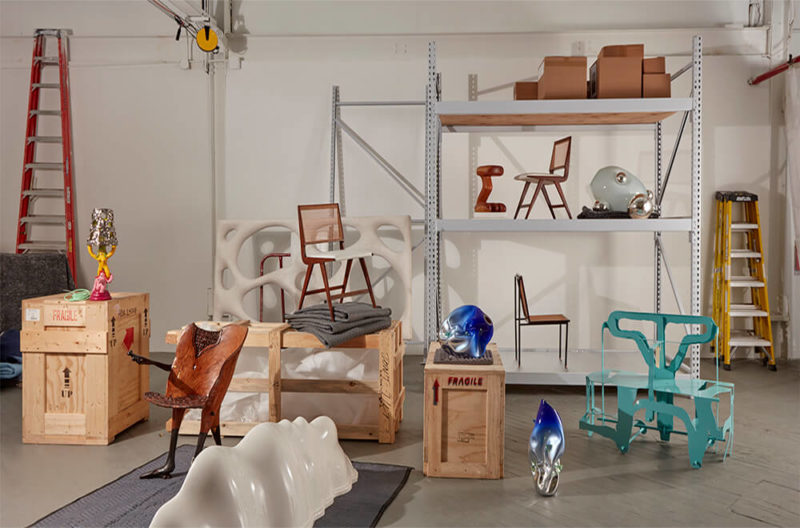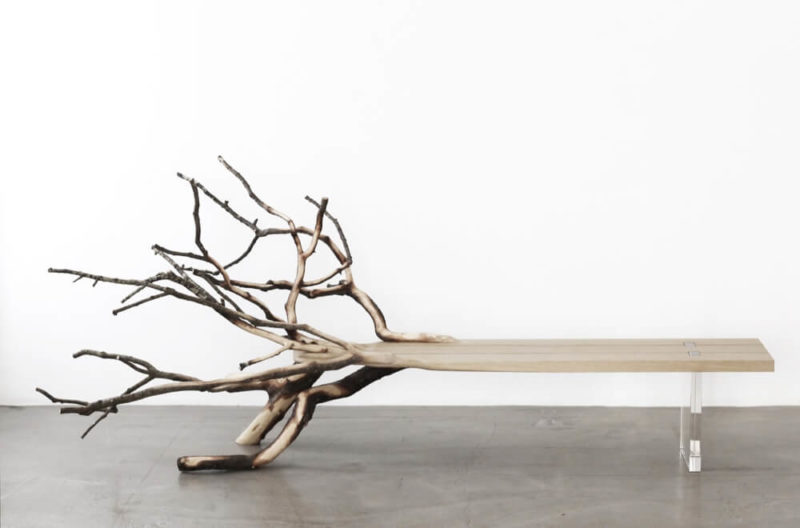After the Wall: Design since 1989
Thirty years ago the Iron Curtain started to buckle. As this show reveals, the impact of that moment has resonated on every level - including design.
Vitra Design Museum, Weil am Rhein, Germany
26th October 2019 – 23rd February 2020
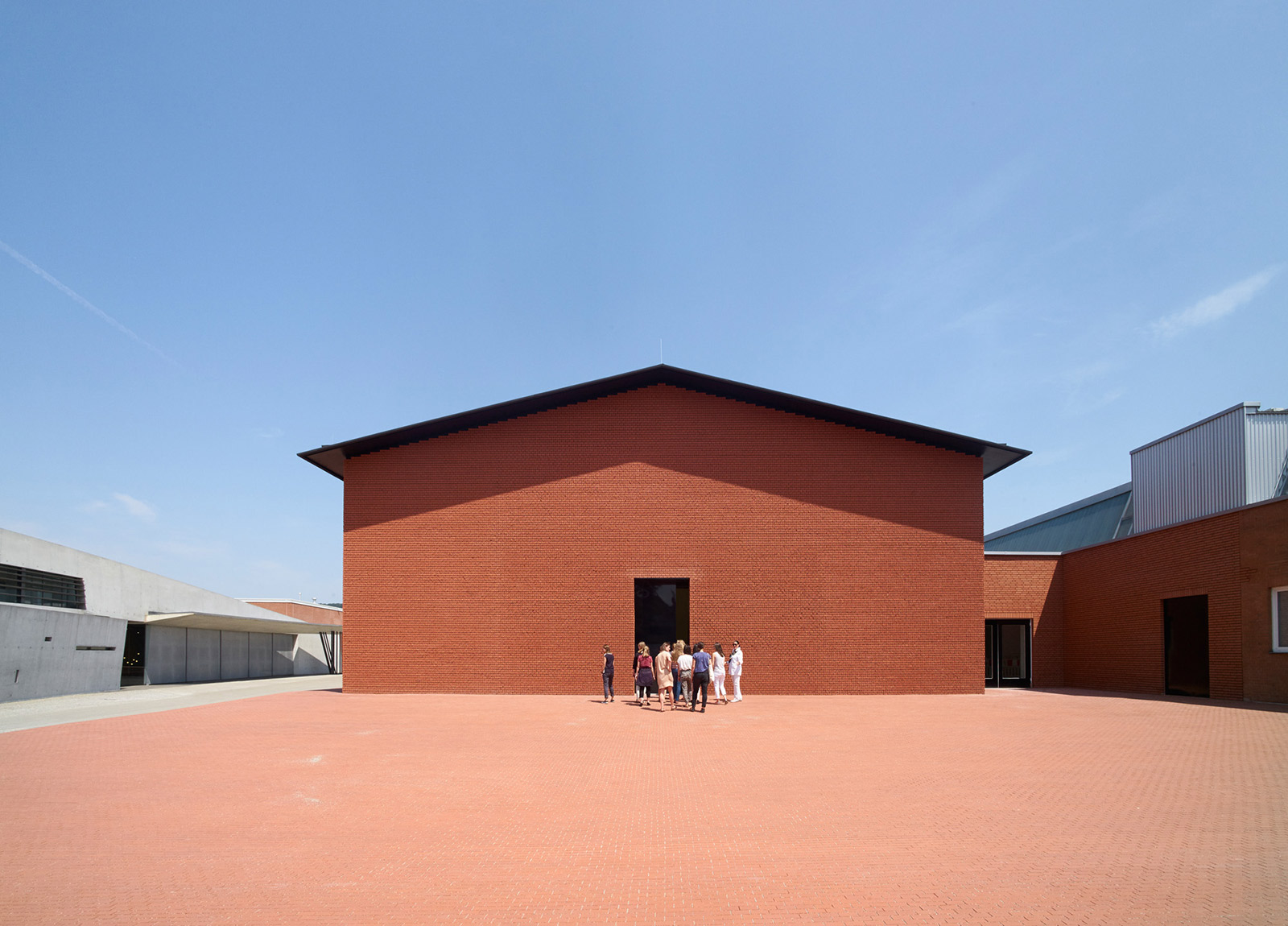
Vitra Schaudepot
COURTESY: © Vitra Design Museum / PHOTOGRAPH: Mark Niedermann
TO MARK THE thirtieth anniversary of the fall of the Berlin Wall, the Vitra Design Museum is staging an exhibition about shifts in design and consumer culture in the last three decades. The show is presented in the red bricked, Herzog & de Meuron-designed Schaudepot where Vitra’s historic collection of chairs, from the 1800s to the present, is permanently on view. Coincidentally, the museum – although not the Schaudepot, completed in 2016 – also has its thirtieth anniversary this year. This context forges a link between the fall of the Berlin Wall and the broadened scope of design, leading to the collectible design market.
The exhibition steers clear of merely highlighting works from Vitra’s collection. Rather, the curator Erika Pinner has considered each five-year period since 1989 through the optic of consumer products and technological advancements to show how they reflect societal change. Anyone expecting a “greatest hits” of the most remarkable chairs, pieces of furniture and lighting from the last 30 years might be disappointed. Some exhibits are vernacular but were selected due to their innovation, or relevance to a socio-political-economic issue.
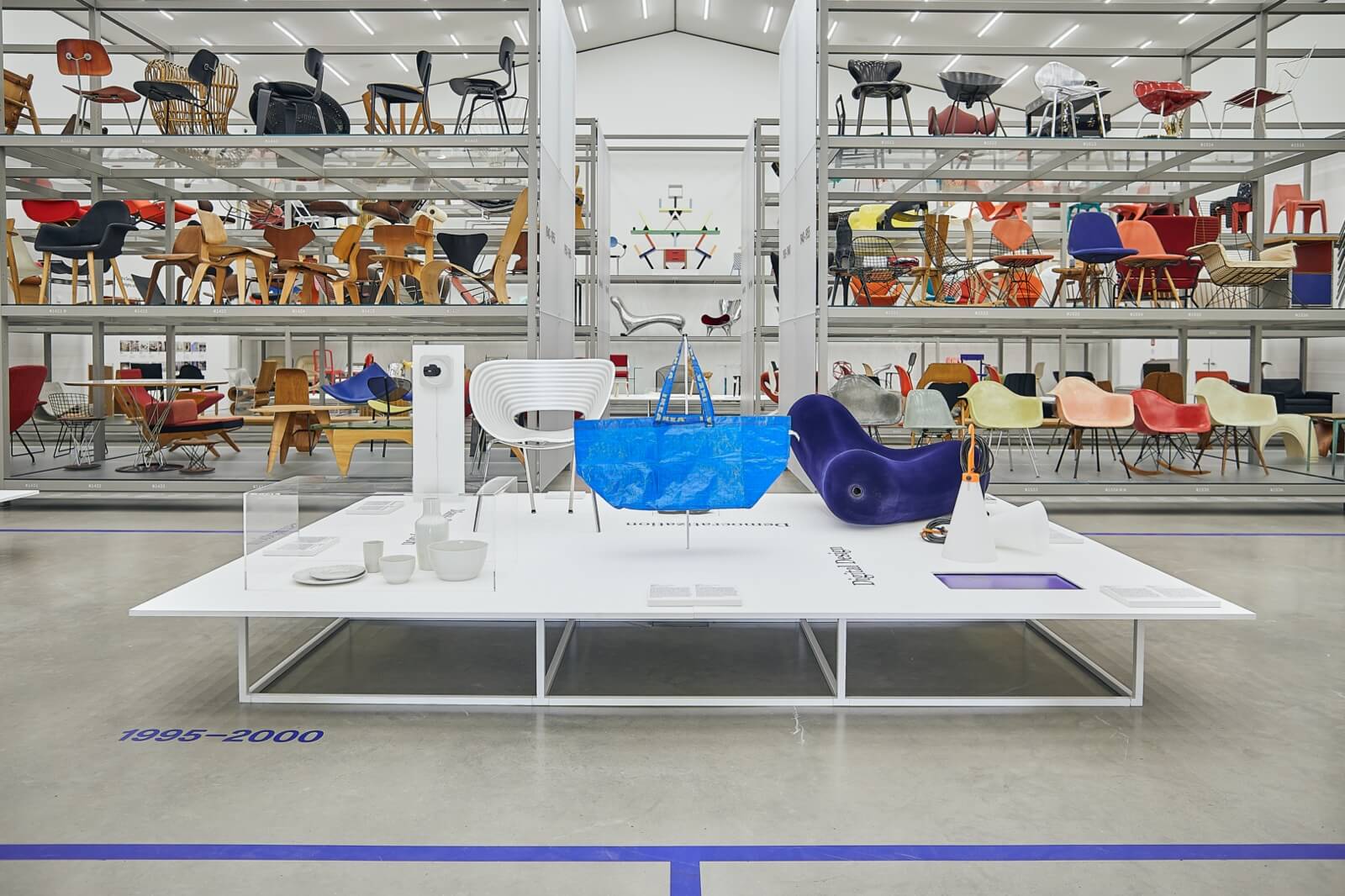
Installation view (from left to right): Hella Jongerius, ‘B-Set’ dinner service, 1997; Naoto Fukasawa, ‘CD player’, 1999; Ron Arad, ‘Tom Vac’ chair, 1997; Marianne and Knut Hagberg, ‘Frakta’ shopping bag, 1996; Marc Newson, ‘Bucky’ chair, 1995; Konstantin Grcic, ‘Mayday’ lamp, 1999
COURTESY: © Vitra Design Museum / PHOTOGRAPH: Lucia Hunziker
Each display is themed around certain buzzwords. Curated around “minimalism, accessibility and appropriation”, the first recalls the androgynous grunge years through a bottle of ‘CK One’ – the first unisex fragrance – along with Philippe Starck’s lemon squeezer and Jasper Morrison’s ‘Plywood Chair’ (1988). The main piece, though, is Tejo Remy’s ‘You Can’t Lay Down Your Memory’ (1991) – a witty amalgamation of salvaged, cheap drawers, reset in maple and bound together by a strap that was included in Droog Design’s first influential, conceptual collection in the Netherlands.
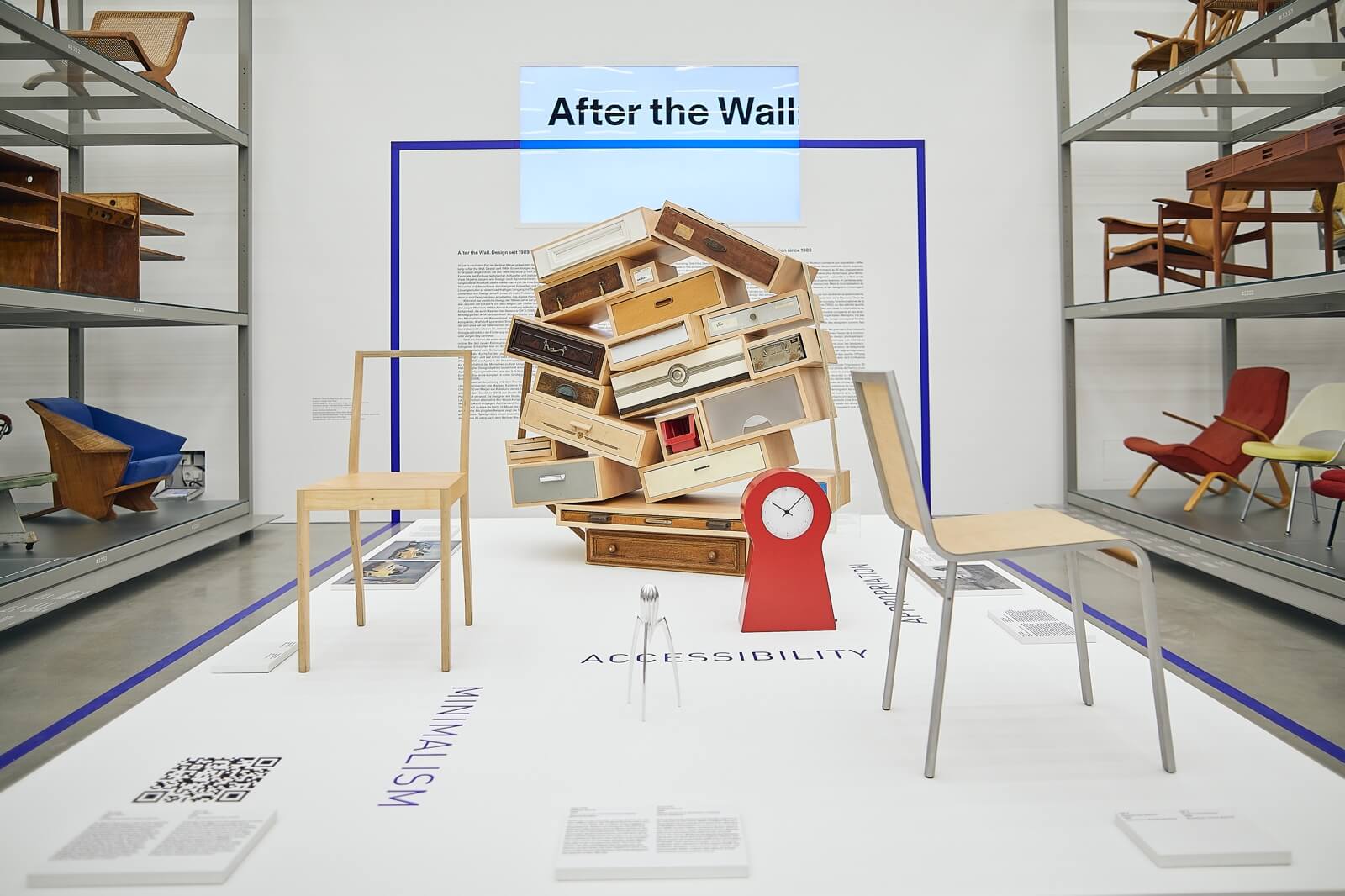
From left to right: Jasper Morrison, ‘Plywood Chair’, 1988; Tajo Remy, ‘You Can’t Lay Down Your Memory’ chest of drawers, 1991; Philippe Starck, ‘Juicy Salif’ citrus squeezer, 1990; Thomas Eriksson, ‘IKEA PS Klocka’ clock, 1994/95; Maarten Van Severen, ‘CN° II’ chair, 1992
COURTESY: © Vitra Design Museum / PHOTOGRAPH: Lucia Hunziker
This lively if somewhat incongruous juxtaposition of objects defines the show. IKEA’s blue plastic bag, launched in 1994, and a popular Nike trainer share a platform with Ron Arad’s now ubiquitous ‘Tom Vac’ (1997) aluminium chair and Marc Newson’s clever ‘Bucky’ chair (1995). Made by inserting a triangular frame into a two-piece mould and injecting polyurethane foam into it, the latter was originally showcased at the Fondation Cartier in Paris.
The launch of the Euro banknote in 2002 was coincidentally the same year that – over in Brazil – Fernando and Humberto Campana created the sushi-inspired ‘Harumaki’ chair from brightly coloured, rolled-up fabric. A bit earlier, Tokujin Yoshioka experimented with rolling and layering thin sheets of white paper to make the honeycomb-inspired ‘Honey-pop Chair’ (2000/2001). Shipped and folded flat, it wondrously opens like an accordion. A bit later, Patrick Jouin harnessed laser sintering techniques to create the ‘C2′ chair (2004) from the Solid series; with intersecting ribbons of material, it was the first furniture object to be 3D-printed in one piece.
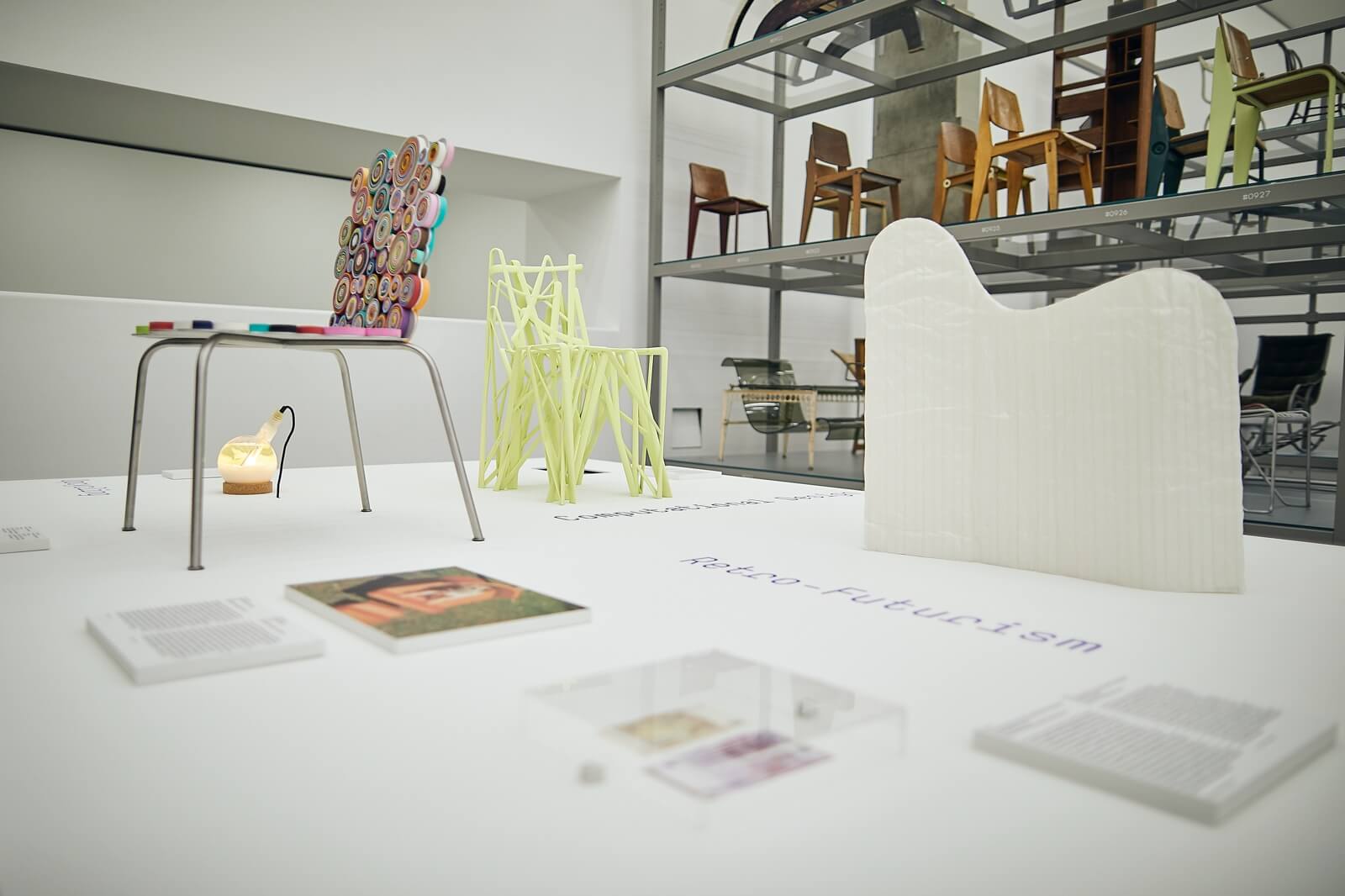
From left to right: Fernando and Humberto Campana, ‘Harumaki’ carpet, 2002/2013; Patrick Jouin, ‘Solid C2’ chair, 2004; Tokujin Yoshioka, ‘Honey-pop Chair’, 2000/01
COURTESY: © Vitra Design Museum / PHOTOGRAPH: Lucia Hunzikerl
The impact of Apple and social media is expressed through the first iPhone designed by Jonathan Ive in 2007 and the 2010 launch of Instagram. This leads onto open-source design and sustainability, illustrated by a red ‘111 Navy Chair’ (2010) made by Emeco (Electrical Machine and Equipment Company) from recycled Coca Cola plastic bottles and Studio Swine’s ‘Sea Chair’ (2013), made from plastic picked up by fishing trawlers. Another example of using waste material is Marjan van Aubel and James Shaw’s ‘Well Proven Chair’ (2012), produced from wood shavings from workshop machines and resin.
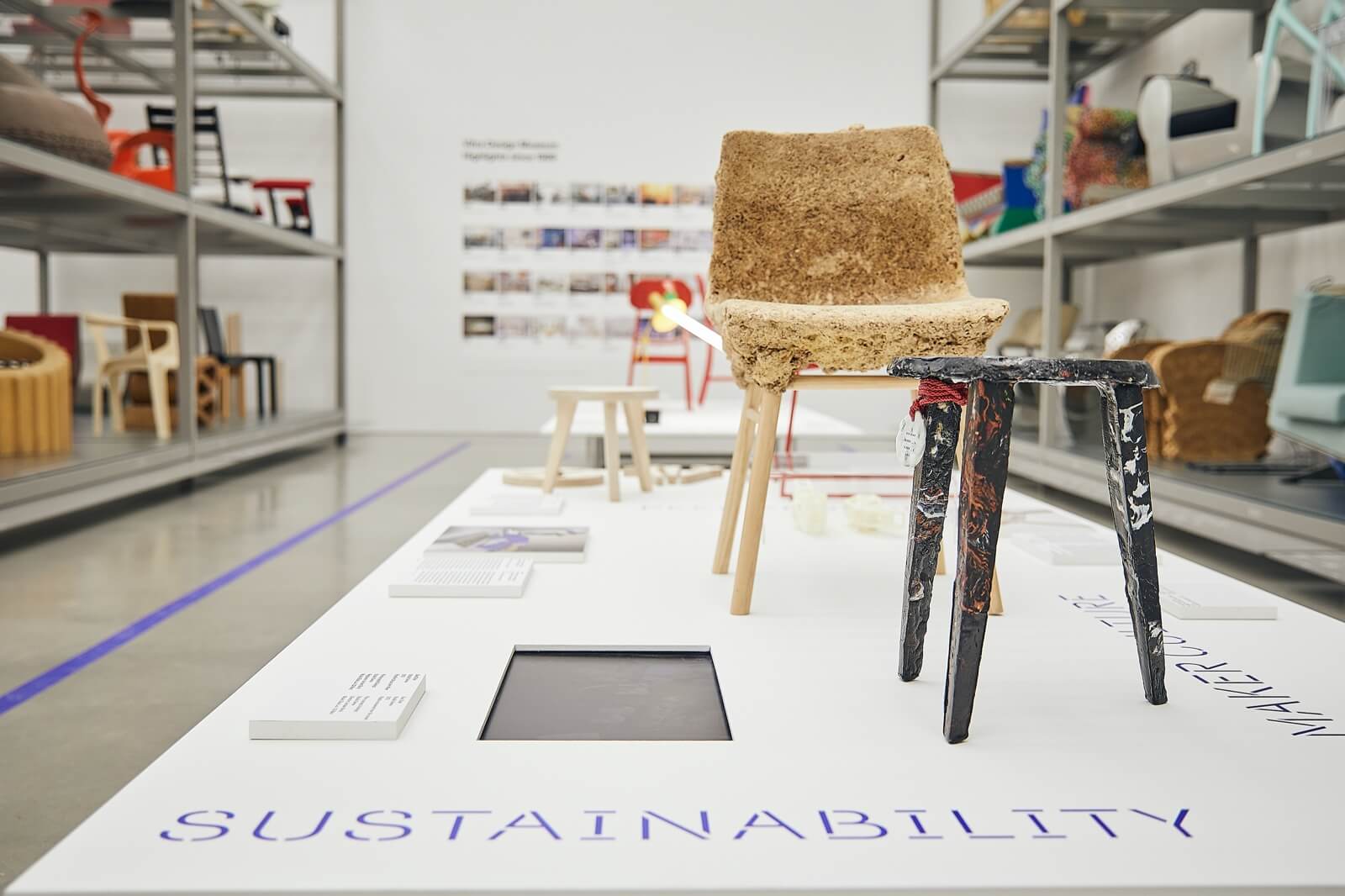
Marjan van Aubel and James Shaw, ‘Well Proven Chair’, 2012 (background); Studio Swine, ‘Sea Chair’, 2013 (foreground)
COURTESY: © Vitra Design Museum / PHOTOGRAPH: Lucia Hunzikerl
The exhibition ends with exhibits representing the themes “post-plastic, social justice and going viral”. In 2016, Marleen Kaptein developed the cross-hatched ‘Recycled Carbon Chair’ from carbon fibre – an example of how good design can be created from a material presenting an environmental hazard. In the same vein, fellow Dutch designers Eric Klarenbeek and Maartje Dros established an ‘Algae Lab’ (2019), in collaboration with Atelier Luma, to make bioplastic objects like vases. Pro-EU, anti-Brexit sentiment is also on display in the form of Hauke Odendahl’s ‘Union’ chair (2019). The set of 28 loose blue components, representing the 28 EU member states (including the UK until it officially leaves), allows users to construct the chair as they wish, a variety of configurations being possible.
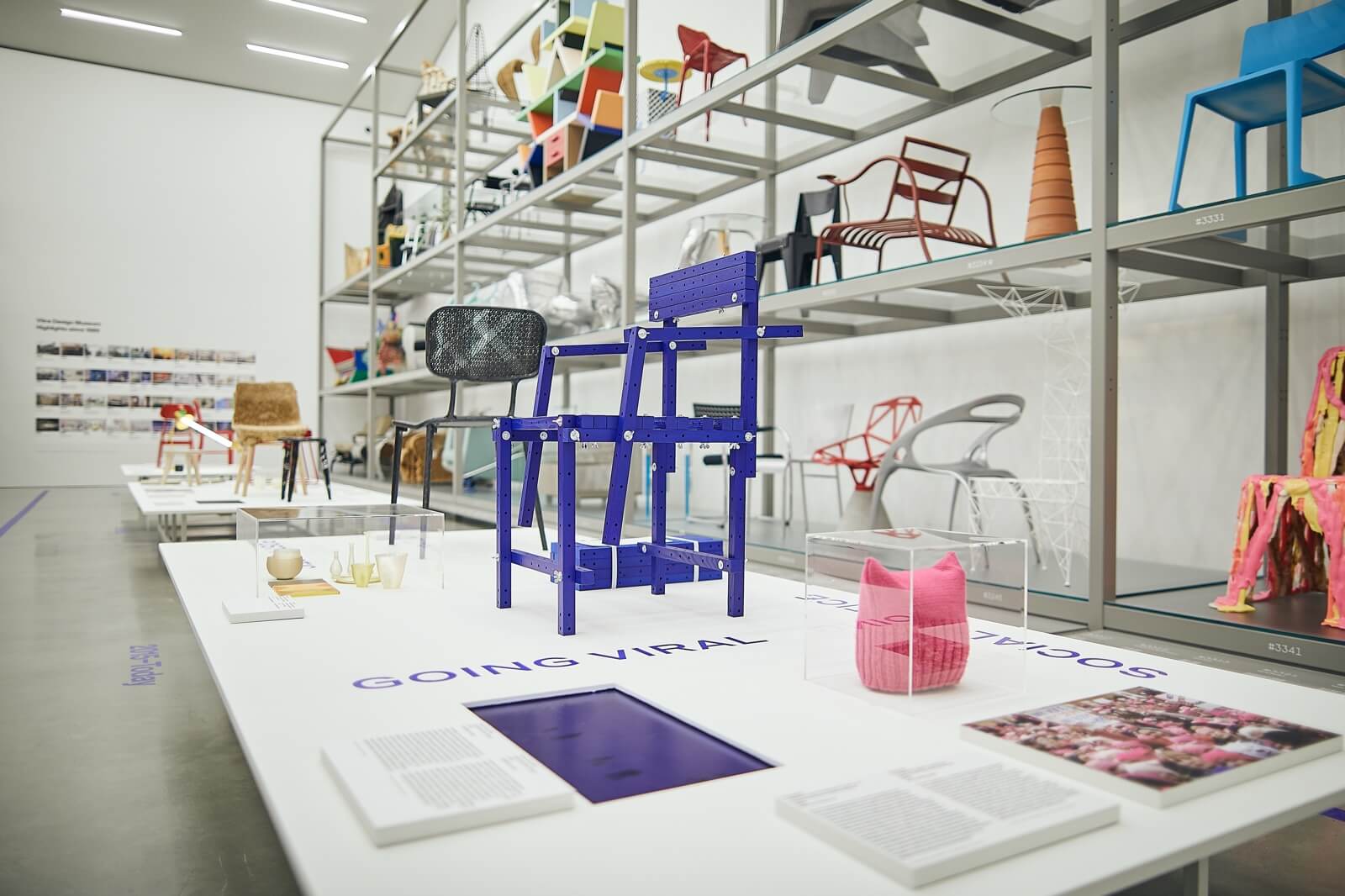
Hauke Odendahl, ‘Union’ chair, 2019
COURTESY: © Vitra Design Museum / PHOTOGRAPH: Lucia Hunziker
Another ecological piece is presented outside, in front of the Schaudepot: Jurgen Bey’s ‘Tree-trunk bench’ (1998-2013). Produced for Droog, it is composed of a fallen tree trunk onto which three bronze casts of the backs of classical chairs are perched. A statement against transporting trees, it is sold without the trunk. Upon receiving the three bronze casts, any buyer would need to locally source a trunk in order to complete the piece.
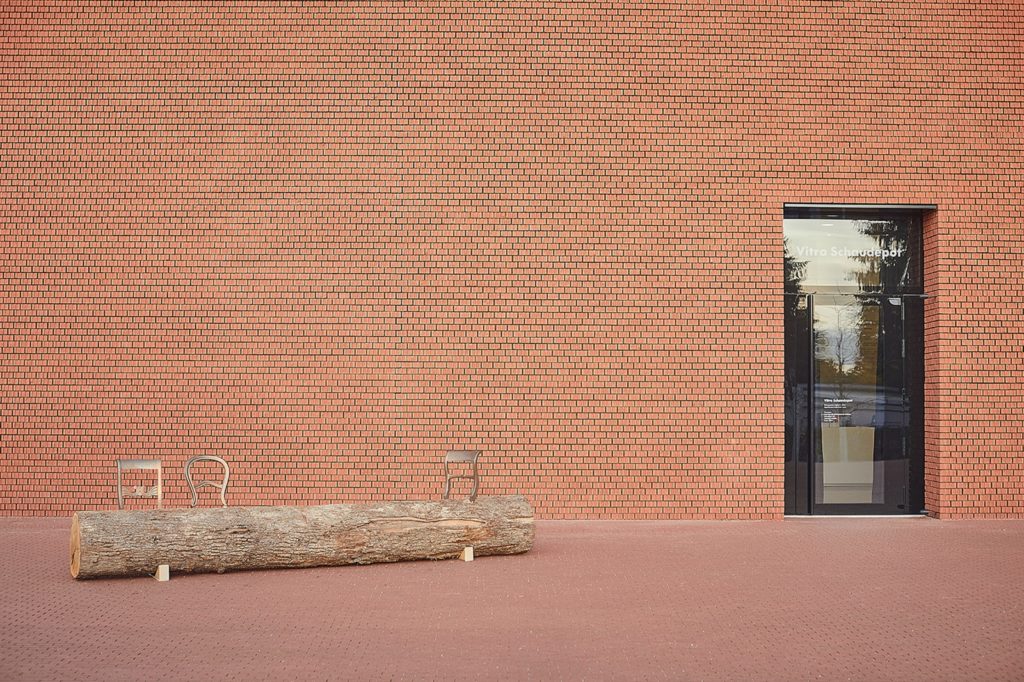
Jurgen Bey, ‘Tree-trunk bench’ (1998-2013)
COURTESY: © Vitra Design Museum / PHOTOGRAPH: Lucia Hunziker
Vitra Design Museum – one of the world’s leading design museums.




